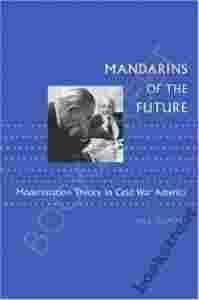Because it provided the dominant framework for
"development" of poor, postcolonial countries,
modernization theory ranks among the most important
constructs of twentieth-century social science. In
Mandarins of the Future: Modernization Theory
in Cold War America Nils Gilman offers the
first intellectual history of a movement that has had
far-reaching and often unintended
consequences.
After a survey of the
theory's origins and its role in forming America's
postwar sense of global mission, Gilman offers a close
analysis of the people who did the most to promote it in
the United States and the academic institutions they
came to dominate. He first explains how Talcott Parsons
at Harvard constructed a social theory that challenged
the prevailing economics-centered understanding of the
modernization process, then describes the work of Edward
Shils and Gabriel Almond in helping Parsonsian ideas
triumph over other alternative conceptions of the
development process, and finally discusses the role of
Walt Rostow and his colleagues at M.I.T. in promoting
modernization theory during the Kennedy and Johnson
administrations. By connecting modernization theory to
the welfare state liberalism programs of the New Deal
order, Gilman not only provides a new intellectual
context for America's Third World during the Cold War,
but also connects the optimism of the Great Society to
the notion that American power and good intentions could
stop the postcolonial world from embracing
communism.

